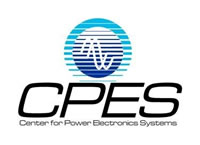

 |
 |
|
|
||||||||||||||
 About Our Members |
||||||||||||||
|
|
||||||||||||||

From its background as a Technology Development Center of Virginia’s Center of Innovative Technology (CIT) from 1987-1997, and as an Engineering Research Center for the National Science Foundation from 1998 - 2008, CPES has continued to work towards making electric power processing more efficient, more exact, and more affordable in order to conserve energy -- from battery–operated electronics to vehicles; from regional to national electrical distribution systems. CPES focuses its research to meet industry needs and enables industry to profit from the Center’s research and outputs. To date, more than 150 companies worldwide have benefited from the industry partnership program. The CPES program enables its Principal Plus Members to sponsor graduate fellowships and provides the opportunity to direct research in areas of mutual interest. It allows the Center to pool resources and focus on developing pre-competitive technologies to address common challenges and share research results among sponsoring members. Presently, three CPES mini-consortia are established:
PMC (Power Management Consortium): Initiated in 1997 at the request of Intel, CPES established this mini-consortium to address the issue of power management for future generations of microprocessors. As a result of this focused research, the CPES team has developed a multi-phased voltage regulator (VR) module and related technologies, including 25 U.S. patents for power delivery architecture, modularity and scalability, control and sensing, current sharing, integrated magnetics, and advanced packaging and integration. The multi-phase VR is easily scalable to meet ever-increasing current consumption, clock rate, and stringent voltage regulation requirements. Today, every PC and server microprocessor in the world is powered with this VR. These technologies have been further extended to high-performance graphical processors, server chipsets and memory devices, networks, telecommunications, and all forms of mobile electronics. Currently, the scope of research has been expanded to include power management for distributed power system architectures, EMI/EMC, power quality, high-frequency/high-density AC/DC and DC/DC converters for tablets, notebooks, desktops, servers, networking products, telecom equipment, solid-state lighting, battery systems, PV systems and other electronic applications. Since its inception, over 30 companies have participated in the PMC mini-consortium.
HDI (High Density Integration): Over the past two decades, CPES has developed unique high-temperature packaging technology critical to the future power electronics industry. In the HDI mini-consortium, the goal of high power density is pursued following two coupled paths, both leveraging the availability of wide-bandgap power semiconductors, as well as high-temperature passive components and ancillary functions. The current HDI scope of work encompasses integration technologies; high-frequency, high-density packaging; components; module‐level integration; and system‐level integration.
REN (Renewable Energy and Nanogrids): The main objective of the REN mini-consortium is to expand CPES’s expertise in autonomous electric power systems (already established for transportation and IT), into the areas of renewable energy and storage system integration in the electric grid through power electronic converters, while providing competitive research and education in that area. CPES-REN research directions include dc-nanogrid operation and performance, power management for sustainable homes and buildings; energy storage systems; grid connected multi-level inverter and converter topologies and control; modular multi-level converters for high-power, high-voltage grid applications; and other power electronics applications for enhanced grid performance and resource integration. CPES Principal-level members also gain the competitive edge of early access to intellectual properties generated collectively by mini-consortium research. This is offered via the IPPF (Intellectual Property Protection Fund), a unique IP access mechanism available automatically, and at no additional cost, to Principal Plus and Principal Members. IPPF members meet quarterly with inventors to discuss invention disclosures and jointly decide which technologies to protect, with patenting costs covered by IPPF. Once a technology is protected, IPPF members are granted a royalty-free, non-exclusive, non-transferable license to use the technology. The Center has been cited by National Science Foundation (NSF) as a model Engineering Research Center (ERC) for its industry collaboration and technology transfer, education, and outreach programs. Presently, CPES comprises 5 core faculty members, 11 technical and support staff, over 50 graduate students and more than 20 visiting scholars from industry and academia worldwide. This year, the Center has more than 80 industry consortium members contributing over $2M in funds, along with $3M in contract research that includes 22 research projects sponsored by 16 sponsors, such as DOE ARPA-E, ONR, NSF, ABB, Boeing, Rolls-Royce, Safran, Panasonic, UTAS, Halliburton, and Toyota. Over the years, the Center has granted 283 graduate degrees (130 Ph.D., 153 M.S.); published over 3000 technical papers, theses and dissertations; filed 231 invention disclosures, and has been awarded 85 U.S. patents. Provided by Dr. Fred C. Lee, CPES Director
Magnetics Powder Core Materials
Numerous Applications These cores are used in chokes, inductors, filter transformers, and power supply components to provide efficient energy conversion in the following industries: Global Initiative To meet global customers’ needs for ongoing production, the company has manufacturing complexes in Xiamen and Haicang, China, as well as warehouses in Hong Kong and East Butler, PA. Magnetics is headquartered in Pittsburgh, PA. From relatively small production runs to large-scale, ongoing, time-sensitive manufacturing, Magnetics has the flexibility and agility to deliver high-quality products at cost-effective rates. A recognized leader in quality and reliability, Magnetics’ products are manufactured to conform to international standards for electrical, dimensional and visual requirements. In addition, Magnetics' products comply with global environmental initiatives such as Reach, ROHS, GADSL, and SGS. Our manufacturing facilities in Haicang and Xiamen, China are ISO 9001:2008 certified.
Excellence in Design With one of the most knowledgeable engineering staffs in the industry, Magnetics has expertise in developing innovative solutions for customer applications. Magnetics’ technical support is a resource for technical knowledge and innovative thinking can shorten the design cycle, move through prototype testing and deliver high-quality products that fill specialized needs. The Magnetics website, www.mag-inc.com, contains helpful design tools such as inductor design, transformer design, curve fit equation, and a ferrite core loss calculator. The selection guide is useful for finding the correct Magnetics’ product lines for your specific application, and the technical documents database contains Magnetics’ product catalogs and other informative design articles. From the design phase to full-scale production, Magnetics can assist with all your needs. Provided by Grace Murtoff, Marketing Specialist, Magnetics
Editors Note: We would like to feature your company in a future issue of the Update. Please contact the Association Office for information about how to submit an article for consideration. |
||||||||||||||
| <<-Contents | <-Previous | Page 4 | Next-> | ||||||||||||||
|
If you or anyone in your company is interested in getting on the distribution list for future issues of PSMA UPDATE, please send e-mail to: power@psma.com. Be sure to include your name and
|
||||||||||||||